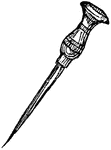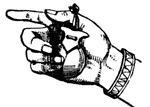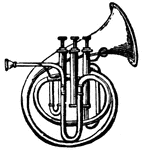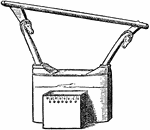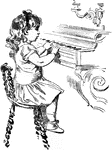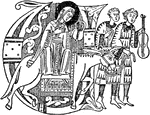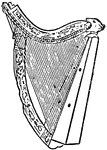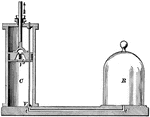
Air Pump
"The air pump is an instrument for removing air from a given space. A closed vessel R is called the…

Air Pump
"The air pump is an instrument for removing air from a given space. A closed vessel R is called the…
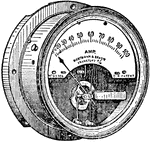
Hot-wire Ammeter
"Hot-wire instruments working on the sag principle can be used in any position if properly contructed,…
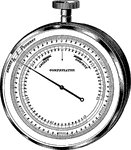
Aneroid Barometer
"The principal part of the aneroid barometer is a cylindrical air-tight box of metal closed by a corrugated…

Arm Rest for Musical Instruments
This is the arm rest for musicians who play violin, the arm rest is a musical instrument implement used…
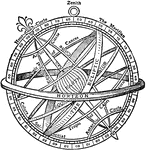
Armilla
"Armillary Sphere, an instrument used in astronomy. In its simplest form, consisting of a ring fixed…
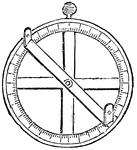
Astrolabe
"Originally used for any instrument used for observing stars; afterwards used for an instrument for…
Aulos
"Roman Ivory Aulos found at Pompeii, showing slides and rings." — The Encyclopedia Britannica,…

Chemical balance
"The most accurate method of determining the specific gravity of a mineral is by the use of a chemical…
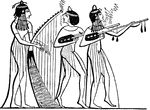
Egyptian Band
"That the Egyptians paid great attention to the study of music and had arrived at a very accurate knowledge…
Barometer
"The barometer is simply a pressure gauge that registers the pressure of the air. In this case the cup…
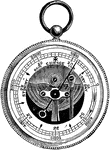
Aneroid barometer
"The aneroid barometer is an easily portable instrument, and avoids the use of any liquid. It consists…
Basset Horn
"A wood-wind instrument, not a "horn," member of the clarinet family, of which it is the tenor. The…
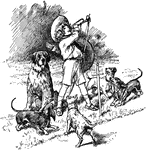
Boy Blowing Horn with Dogs by His Side
An illustration of a boy blowing a horn with dogs by his side.
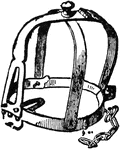
Brank
"Brank, or Branks, an instrument and formerly used in Scotland, and to some extent also in England,…
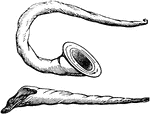
Buccina
"A kind of horn trumpet, anciently made out of a shell, the form of which is exhibited in the two specimens…
Glass bulb
"An air thermometer consists essentially of a large glass bulb at the upper end of a tube of small but…
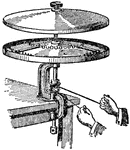
Butyrometer
Butyrometer is a measuring instrument used to measure fat content in milk or milk products in general.…

Bunsen's Calorimeter
"In Bunsen's instrument a test tube is sealed into and enclosed by an outer tube, the lower part of…

Chelys
"Chelys, from a vase in the British Museum, where also are fragments of such an instrument, the back…
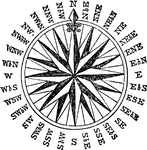
Compass
"Compass, Mariner's, is the name given to the instrument by which sailors are enabled to steer their…

Compasses
"The compasses, next to the T square and triangles, are used more than any other instrument. A pencil…
Compasses
"The compasses, next to the T square and triangles, are used more than any other instrument. A pencil…
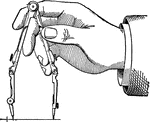
Compasses
"The compasses, next to the T square and triangles, are used more than any other instrument. A pencil…

Compasses
"The compasses, next to the T square and triangles, are used more than any other instrument. A pencil…
Compasses
"The compasses, next to the T square and triangles, are used more than any other instrument. A pencil…
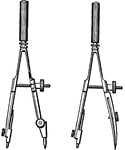
Compasses
"The compasses, next to the T square and triangles, are used more than any other instrument. A pencil…
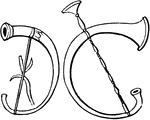
Cornu
"A wind instrument, anciently made of horn, but afterwards of brass. Like the tuba, it differed from…
Double Pipes
"Ancient Greek Double Pipes. Elgin Collection, British Museum." — The Encyclopedia Britannica,…

Gold Leaf Electroscope
"In the gold-leaf electroscope (invented by Bennet in 1787), two light strips of gold-leaf hang from…
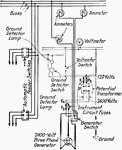
Fuse Protection on Alternating Current Switchboard
"Fuse protection on instrument circuit of an alternating-current switchboard." —Croft 1920
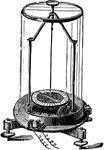
Astatic galvanometer
"The galvanometer is an instrument for determining the strength of an electric current by means of the…
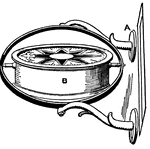
Gimbals (Diagram)
A gimbals is a contrivance designed to keep a marine compass, chronometer, lamp, or other instrument…

Harp
"This primitive-looking instrument was played horizontally, being born upon the performer's shoulder.…

Harp
"This primitive-looking instrument was played horizontally, being born upon the performer's shoulder.…

